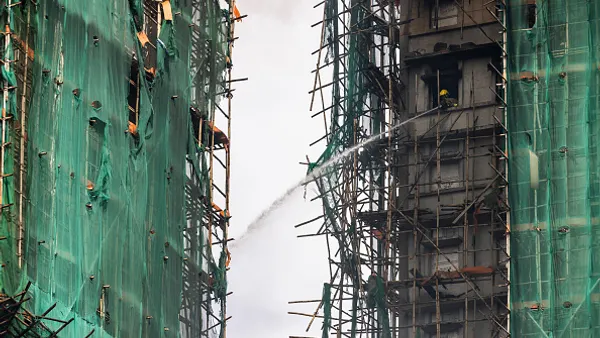Following a string of successful years, the build-to-rent sector has maintained its frenzied activity pace through 2024 and into 2025. A significant amount of new build-to-rent supply has come online in the past 12 months, according to Jordan LaMarche, vice president of Bethesda, Maryland-based real estate consultancy RCLCO — a trend likely to continue for the next six months.
Still, despite 2024 representing the peak of new supply, BTR still makes up only 6%-7% of total rental deliveries. “We … think this is still very short of the potential demand for the product type overall,” LaMarche said during a recent RCLCO webinar on the current state of the BTR market.
Given this increase in supply, rent growth has been stagnant in BTR year over year, according to LaMarche. However, BTR has a 0.5% higher occupancy rate than multifamily overall, and weakening starts may lead to declining vacancies over the course of the year, according to LaMarche.
Investor experimentation
While build-to-rent is still a newer asset class, investors have a greater understanding of BTR and their exposure to it than they did in the past, and are trying to figure out where it fits in their portfolio, according to Rick Pollack, managing director of RCLCO Fund Advisors.
“They really want to understand the fundamentals of how it works,” Pollack said. “How does it lease? How does it operate? How can they be smarter about their investments going forward … [and] what does the end of the investment look like?”
LaMarche noted that even within the confines of a single-family rental home or townhome, developers are experimenting with product type and how different features might appeal to customers or reduce costs. For instance, even within the same submarket, two BTR properties may vary widely in terms of style, unit size and garage arrangement.
“There isn’t a silver bullet yet to get the exact right renter segmentation,” LaMarche said. “But there is plenty of room for customization to potentially meet higher price points.”
Pollack believes that the sector is in “the second to third inning” of its development, but will need more time to mature completely. Currently, there are very few transactions in the BTR sector for investors to build their predictions on; as more occur, more players may enter the space as they get a better idea of the numbers involved.
“From the institutional investor standpoint, [what] gets us further along in the game is more stabilized communities and more stabilized communities that trade,” Pollack said. “A lot of the capital market space is based on core transactions and then folks adjust their risk and return expectations on core transactions.”
Best practices
Based on interactions with owners and investors, LaMarche’s suggestions for the single-family rental sector include:
- Investing in the education and marketing processes early. Because build-to-rent is a relatively small product type, renters, investors and municipalities often need more information on what it is and how it works, especially in new markets.
- Know your demographics. Cottage-style homes tend to attract older residents or those without children, while townhomes appeal more to families.
- Be strategic about amenities. Pools, fitness centers and dog parks are very valuable to renters — “but stop there,” LaMarche said. “Other amenities don’t drive a significant premium and smaller versions do just as well as the larger ones.”
- Prioritize delivering amenities with the first units, in order to attract renters. However, limit the first residents’ exposure to construction as much as possible.
- Add fences to yards. Regardless of yard size, fenced yards drive a high rent premium as spaces for kids and pets.
- Size driveways and garages for larger cars. Since many single-family renters are young families, they may have larger cars than the average renter and will value easy parking.
Correction: Jordan LaMarche is the vice president of RCLCO.












